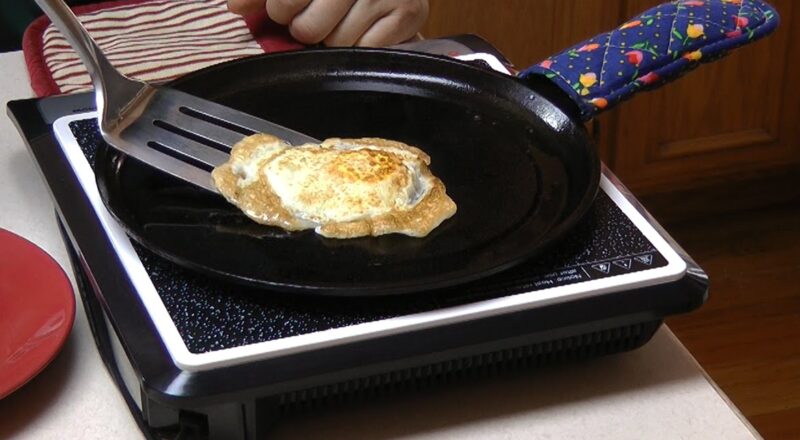The art of matching pan size with induction ring is an essential skill that every kitchen professional and cooking enthusiast should master. When it comes to achieving the perfect cooking results, the size of your pan and the size of the induction ring can make a significant difference. In this article, we will delve into why this alignment is crucial, how it affects your cooking, and the best practices to follow. Let’s explore the world of induction cooking and understand how to make the most of your kitchen equipment.

Understanding Induction Cooking
Induction cooking is a popular method that uses electromagnetic fields to heat pots and pans directly. This results in fast and efficient cooking, with precise temperature control. However, to get the most out of your induction cooktop, it’s important to use the right-sized pan for the induction ring. This ensures even heating and optimal energy transfer.
Why Pan Size Matters
Matching the pan size with the induction ring is crucial for several reasons:
- Efficient Energy Use: A well-matched pan ensures that energy is efficiently transferred from the induction ring to the pan, reducing cooking time and energy consumption.
- Even Heating: When the pan size matches the induction ring, the heat is distributed evenly across the cooking surface, preventing hot spots and ensuring uniform cooking.
- Safety: A pan that’s too small for the induction ring can lead to overheating, while a pan that’s too large might not heat adequately, posing a safety risk.
How to Determine the Right Pan Size
Determining the right pan size for your induction ring involves a few simple steps:
Check the Manufacturer’s Guidelines
Most induction cooktops come with manufacturer’s guidelines that specify the minimum and maximum pan sizes for each ring. Always refer to these guidelines when selecting your cookware.
Use a Measuring Tape
Measure the diameter of the induction ring and select a pan with a similar diameter. A difference of one or two centimeters is usually acceptable, but a significant mismatch can affect cooking performance.
Consider the Shape of the Pan
The shape of the pan also plays a role in its compatibility with the induction ring. Flat-bottomed pans are ideal for even heat distribution, while pans with an irregular shape may not perform as well.
Common Pitfalls to Avoid
While matching pan size with induction ring might seem straightforward, there are common pitfalls that can affect your cooking results:
- Using Non-Magnetic Cookware: Induction cooktops require magnetic cookware. Always ensure your pans are compatible with induction cooking.
- Ignoring the Pan’s Material: Some materials, like cast iron, work better on induction cooktops than others. Choose materials that provide efficient heat transfer.
- Overlooking the Pan’s Weight: Heavy pans can retain heat longer, which is beneficial for certain cooking techniques. However, ensure your cooktop can support the weight.
Benefits of Proper Pan and Ring Alignment
When you match the pan size with the induction ring correctly, you enjoy several benefits:
- Improved Cooking Results: Even heating leads to better texture, flavor, and consistency in your dishes.
- Reduced Energy Bills: Efficient energy use means you’ll spend less on electricity.
- Longer Cookware Lifespan: Proper use of cookware minimizes wear and tear, extending its lifespan.
Real-Life Applications and Tips
Here are some practical tips for aligning your pan size with the induction ring:
Experiment with Different Pans
Not all pans are created equal. Experiment with different sizes and materials to find what works best for your cooking style.
Invest in Quality Cookware
Quality cookware may cost more upfront, but it offers better performance and durability. Look for pans with a flat bottom and magnetic properties.
Regular Maintenance
Maintain your induction cooktop and cookware by cleaning them regularly. This ensures optimal performance and longevity.
For more information on maintaining your cookware, check out this uneven browning guide.
Conclusion
In conclusion, matching pan size with the induction ring is a vital aspect of induction cooking. By ensuring the correct alignment, you can enjoy efficient energy use, even heating, and better cooking results. Whether you’re a professional chef or a home cook, understanding this concept will enhance your culinary experience. Remember, the right pan size is key to unlocking the full potential of your induction cooktop.

FAQs
Can I use a larger pan than the induction ring?
While you can use a slightly larger pan, it’s best to match the pan size closely to the induction ring for optimal performance.
What happens if I use a smaller pan?
Using a smaller pan can lead to overheating and uneven cooking. It’s important to follow the manufacturer’s guidelines for pan size.
How do I know if my pan is induction compatible?
Check for an induction-compatible symbol on the pan or test it with a magnet. If the magnet sticks, the pan is suitable for induction cooking.
For further reading, consider visiting this expert guide on induction cooktops and cast iron pans.
For more tips on cooking with cast iron, visit cast iron heating tips.
This article contains affiliate links. We may earn a commission at no extra cost to you.

